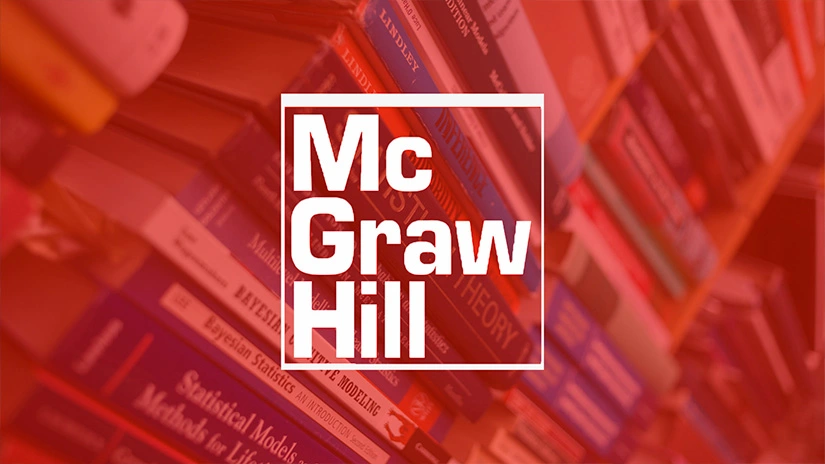BARNES & NOBLE, MCGRAW-HILL INCREASE TEXTBOOK DISTRIBUTION

Barnes & Noble Education and McGraw-Hill Education have expanded a relationship to make course materials more accessible. McGraw-Hill Education material will be accessible via Barnes & Noble Education’s inclusive access initiatives.
MCGRAW- HILL EDUCATION E-CONTENT
The firms will distribute McGraw-Hill Education e-content and new rental titles via Barnes & Noble channels.
McGraw-Hill Education e-content will be offered via Barnes & Noble’s First Day programed. The approach provides course materials before classes begin. McGraw hill promo code is here to avail discount.
TYPICAL NEW TEXTBOOK
The typical new textbook cost $81 in 2015-2016, up from $57 in 2008. E-books and free resources are reducing textbook expenses, however its unclear how much students spend or how many they acquire (print or digital).
STUDENT MONITOR
Student Monitor, a higher education market research firm, found that McGraw hill education textbook cost less per unit than new printed textbooks. The association anticipates that student expenditure on textbooks will continue to fall as more students utilize digital components.
RESEARCH GROUP SURVEYED
OERs are becoming more popular, but integrating them with faculty and students isn’t easy. Babson Survey Research Group surveyed 2,711 teachers at U.S. higher education institutions and found just 30% were aware of free educational resources. Many said the materials were either hard to access or of poor quality.
OER MOVEMENT
Barnes & Noble Education and McGraw hill education textbook relationship to enhance access and offer useful resources may help drive the OER movement ahead, or at least raise faculty understanding of how to give students with these materials.
MCGRAW HILL GIVES ACADEMIC LIBRARIES DIGITAL TEXTBOOKS
McGraw Hill is selling and distributing its digital textbooks to U.S. academic libraries via EBook Central, an eBook platform from EdTech giant ProQuest.
Now, EBook Central libraries may choose from hundreds of McGraw Hill eBooks to meet their students’ requirements. EBook Central has sold McGraw Hill’s digital textbooks to 60 libraries.
COLLEGE STUDENT QUICK ACCESS
Michael Ryan, president of McGraw hill education textbook Higher Education business, said academic libraries provide college students quick access to instructional resources. Our cooperation with ProQuest ensures that students have access to e-textbooks throughout this era of remote and hybrid learning.
EBook Central offers 1.5 million eBooks, including e-textbooks, from 950 publishers, with 200,000 new titles added year.
PROQUEST BOOKS
“With the increased demand for learning resources, particularly e-textbooks, we’re thrilled to join with McGraw Hill,” said ProQuest Books President Oren Beit-Arie. More than 800 McGraw Hill e-textbooks are accessible via EBook Central, allowing consumers to pick material without switching platforms.
MCGRAW HILL
McGraw hill education textbook is a learning science business that creates individualized learning experiences. We priorities educational fairness, affordability, and learning achievement to improve lives. McGraw Hill has locations in North America, Asia, Australia, Europe, the Middle East, and South America, and its learning solutions are offered in more than 75 languages.
MCGRAW-HILL EDUCATION
McGraw-Hill Education offers solutions to enhance math teaching and learning for all grades. Each of McGraw hill education textbook -divisions, Hill’s including its two new initiatives, McGraw-Hill Digital Learning and Educators’ Professional Development/McGraw-Hill, invests heavily in mathematics to help educators and students access knowledge in the most effective manner. Over 90% of McGraw-Hill Education’s math offerings are print and digital. Math programs like
- Yes, K-6 Math PD! First K-6 math teacher training materials in California.
- Every day Mathematics and K-5 Growing with Mathematics teach algebra, geometry, and statistics.
- Pre-algebra and algebra e-textbooks for middle and high school students
- The NSF’s Reform Mathematics Curriculum provide sixth- through 12th-grade math programs.
RACE MYTHS IN HISTORY CLASS
High school textbooks generally skim past racial minority discrimination.
This month, a snapshot of a page from one of McGraw Hill’s high-school world-geography textbooks went viral.
The website includes a polychromatic map of the United States, divided up into thousands of counties, as part of a lecture on immigration patterns: Different hues correlate to distinct ancestral groups, and the color allocated to each county represents its highest ethnic presence. A page summary and three text bubbles McGraw hill education textbook describe patterns, such as how Mexico has the most U.S. immigrants now.
DIGTAL AND PRINT VERSIONS
McGraw Hill quickly reacted. It changed the caption in both digital and print versions to accurately describe the migration as a “forced” diaspora of slaves. “We conducted a close review of the content and agree that our language in that caption did not adequately convey that Africans were forced into migration and to labor against their will as slaves,” the company said. Catherine Mathis, the company’s spokesperson, said the textbook appropriately described the horror of the slave trade in more than a dozen different places.
SUPPLEMENTARY CULTURAL
McGraw Hill has offered to give supplementary cultural competence materials, replacement textbooks, or stickers with a revised caption to any school that wants them. More than 100,000 copies of the book are in Texas classrooms, and another 40,000 are in other states, according to Mathis.
WE DON’T EVEN EDUCATE THE TREES.
We educate about twigs.” If nothing else, the episode may show why social studies and history are difficult to teach through textbooks and multiple-choice quizzes. Its issues are subjective and can’t reduced to fact-filled paragraphs.
As historian and sociologist Jim Loewen told me, in history class students “had to remember ‘twigs.’ We’re not teaching the forest—we’re not even teaching the trees,” he added. “Twig history”.
TOPIC
This is why more teachers want to change how the topic is taught. Some historians are urging their peers to reject established methods. Instead of promoting rote memorization of a single, mass-produced textbook, these critics argue that teachers should use a variety of primary-source materials and other writings, encouraging kids to analyses how these narratives are written and recognize inherent biases in conventional instructional materials.
THE ATLANTIC
Michael Conway argued in a piece for The Atlantic this year that history classrooms should concentrate on teaching youngsters “historiography”—the methods historians use and the study of history as an academic subject.